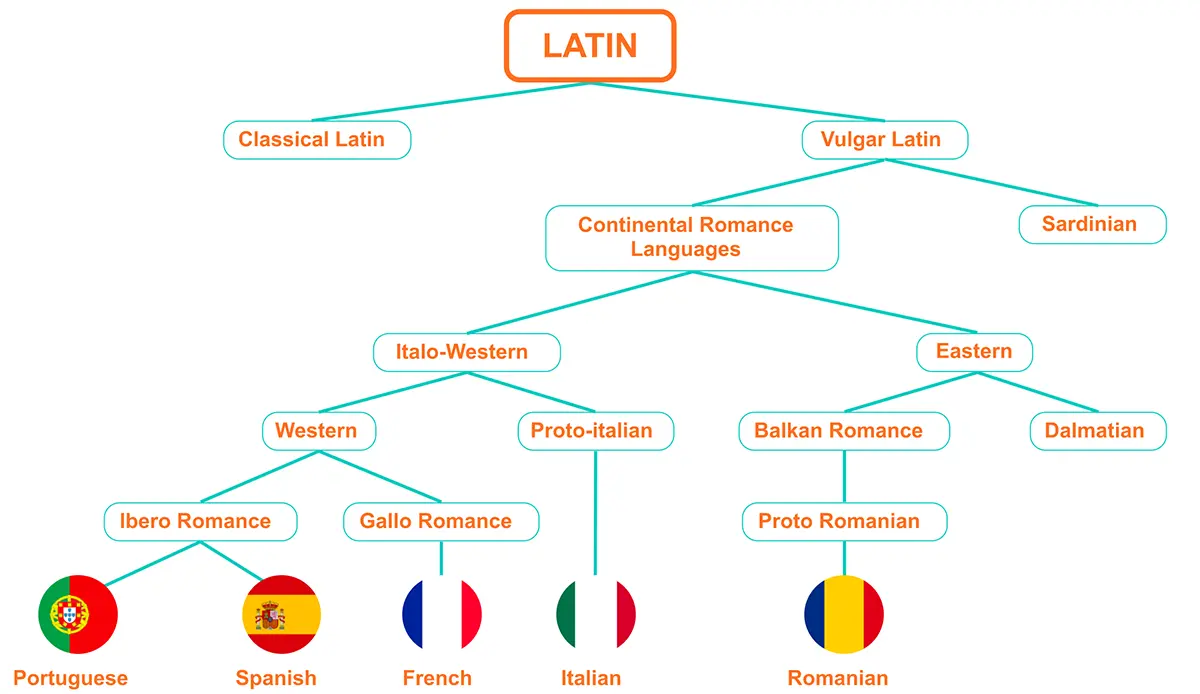"My first lesson went really well. My teacher Eugenia is very nice and explains things really well. So far so good."
Spanish course in Braintree.
Language lessons across the USA and Canada
Call us! 1-877-566-9299 / 1-416-800-9242

Learning a language is always a long-term investment, so you need to choose wisely. And what better option than to learn Spanish today? Learning Spanish will enable you to communicate with over 650 million people worldwide and expand your global family.
Plus, mastering the Spanish language can be useful in the business and cultural spheres. If you plan to work for a Spanish-speaking company, learning the language is certainly an asset. And if you’d like to learn more about the culture and traditions of Spanish-speaking peoples, being able to communicate fluently with them is ideal.
Would you like to start learning Spanish but you are not sure how? Take a look at our Spanish Language Guide below and soon you’ll be communicating in this foreign language with native and non-native speakers alike!
Did you know that more than 650 million people speak Spanish today? 489 million of them are native speakers, while the rest speak Spanish as a second language.
These second-language speakers are scattered all over the world, such as in Russia, Andorra, Australia, or even India. But the territories with the most Spanish speakers (without it being an official language) are the United States (with over 40 million people!), Europe and the United Kingdom (with one and a half million), and Brazil (with 460,000 Spanish speakers), according to the Instituto Cervantes.
Spanish is the official language of 20 countries, namely:
 Argentina
Argentina
 Bolivia
Bolivia
 Chile
Chile
 Colombia
Colombia
 Costa Rica
Costa Rica
 Cuba
Cuba
 Dominican Republic
Dominican Republic
 Ecuador
Ecuador
 El Salvador
El Salvador
 Equatorial Guinea
Equatorial Guinea
 Guatemala
Guatemala
 Honduras
Honduras
 Mexico
Mexico
 Nicaragua
Nicaragua
 Panama
Panama
 Paraguay
Paraguay
 Peru
Peru
 Spain
Spain
 Uruguay
Uruguay
 Venezuela
Venezuela
Of course, all these places speak different forms of Spanish. This will also depend on the influence other official languages of the country have on Spanish. For example, in Paraguay, Spanish is influenced by Guaraní, which is spoken by most people in the country, so the vocabulary and accent of this country are quite different from, e.g., the Colombian variety.
Most of the time, these dialects are mutually intelligible, though a person from Uruguay may not understand what a “pololo” is (which means a boyfriend in Chilean Spanish).
Find more information about this topic in our article about the top dialects of the Spanish language.
Did you know that languages are organized into families? Spanish, for example, belongs to the Ibero-Romance branch, which means it is closely related to other languages that also come from Latin. These languages include Italian, Portuguese, Romanian, French, Catalan, and more!

Being in the same linguistic branch has implications, as these languages have similar vocabulary, grammar, and sentence structure. For example, take a look at the following table to understand how similar some words are across Romance languages.
| English term |
Spanish | European Portuguese |
French | Italian |
|---|---|---|---|---|
| Six | Seis | Seis | Six | Sei |
| Father | Papá | Papai | Père | Papà |
| Beer | Cerveza | Cerveja | Bière | Birra |
| House | Casa | Casa | Maison | Casa |
| Pineapple | Ananá | Ananá | Anana | Ananá |
| Arrow | Flecha | Seta | Fleche | Freccia |
| Bag | Saco | Saco | Sac | Sacco |
There are hundreds more examples, but this can give you an idea of how learning Spanish will be an advantage if you would like to become trilingual or even multilingual. Plus, it will help you in your travels in Western Europe, as the Iberian Peninsula, France, Italy, and Romania speak Romance languages.
Yes, Spanish and English have a strong influence on each other. It all started back in the 16th century, after the Spanish conquistadores arrived in the Americas. For example, Florida was once part of the Spanish Empire. Plus, Americans migrated into territories that had previously been Mexican, such as Texas, New Mexico, or California.
The influence of Spanish on English means there are many words and expressions you already know, such as mosquito, siesta, or even “hasta la vista, baby”. And the same will happen once you start learning Spanish: soon you’ll notice many words sound familiar to you, such as esmoquin (which comes from smoking jacket), gol (which comes from goal), or cóctel (which comes from cocktail).
Of course, there are dozens more ways in which English influenced Spanish and vice versa. If you’d like to know more about the presence of English in Latin American Spanish, you can take a look at our article!
The Spanish grammar system, unfortunately, is much more complex than the English one. Learning (and remembering) Spanish grammar rules and conjugations can be one of the most difficult things to do if you decide to learn Spanish on your own.
Nouns in Spanish are declined for gender and number. Gender is grammatical, so there is no relationship between the noun and the object it represents. For example, a chair is feminine (una silla) while a mirror is masculine (un espejo) for no reason at all. It’s just the way it is and the only way to learn this is by memorizing the gender of nouns.
It’s also important to note that, in Spanish, when you want to refer to a group of men and women, traditionally you would use the masculine gender. For instance, to say “the teachers”, you would say los maestros to encompass both men and women.
To promote inclusiveness and avoid generalizations using the masculine gender, today there’s a movement in Latin America that promotes lenguaje inclusivo. For example, instead of using los maestros, they promote the use of docentes and the letter “e” (les) instead of “o” (los). If you’d like to learn more about non-sexist language, you can read about it in this article.
If you find this feature of Spanish nightmarish, don’t worry: we are here to help! Find below some tips and tricks on how to learn the gender of nouns in Spanish in no time.
The noun ending is usually useful to identify the gender of the noun. For instance, most words ending in -o (such as trabajo or libro) are masculine, while those ending in -a (like casa or silla) are feminine.
Yet, there are exceptions to these rules, like foto (which is feminine) or agua (which is masculine). Take a look at the following table to find more examples of noun endings and learn how to master Spanish gender!
| Noun ending | Gender |
|---|---|
| -o | Masculine (el trabajo, el niño) |
| -aje | Masculine (el viaje, el traje) |
| -miento | Masculine (el pimiento, el sufrimiento) |
| -a | Feminine (la silla, la casa) |
| -ia, -ie | Feminine (la historia, la serie) |
| -eza | Feminine (la tristeza, la pobreza) |
Find below a short list of the 5 types of nouns you need to know if you plan to be fluent in Spanish:
Types of nouns in Spanish Find below a short list of the 5 types of nouns you need to know if you plan to be fluent in Spanish: Adjectives Adjectives in Spanish are also declined for gender and quantity. This means that they change their form if the noun is feminine or masculine. Then, “the white chair” is “la silla blanca” while “the white desk” is “el escritorio blanco”.
You may have noticed that the order of adjectives is also different from English. In Spanish, the adjective always goes after the noun (unless it’s changed by the author for literary purposes, such as in poetry). Look at these examples:

A black car.

An Australian woman.

An Irish man.
Tip: the adjective buen, a variation of bueno (good) can be considered an exception to this rule. So, you wouldn’t say Él es un amigo bueno but rather Él es un buen amigo.
Spanish verbs are the main reason why English-speaking people claim that Spanish is difficult to learn. We are not going to lie, it can be tough to internalize the conjugation system. The main reasons behind this are:
Of course, this does not mean the system is impossible to learn. Rather, you’ll need a bit more motivation and practice to master verbs in Spanish. If you need more inspiration, you can always read our article about 4 ways to learn Spanish verb conjugations.
Spanish verbs have 3 different moods: Indicativo, Subjuntivo, and Imperativo.
As a Spanish beginner, you should focus on learning the Indicative Mood, which is the one with the most tenses. The infographic below illustrates them:
| Modos | Tiempos simples | Tiempos compuestos |
|---|---|---|
| Indicativo | ||
| Presente (Canto) | Pretérito Perfecto Compuesto (He cantado) | |
| Pretérito Imperfecto (Cantaba) | Pretérito Pluscuamperfecto (Había cantado) | |
| Pretérito Perfecto Simple (Canté) | Pretérito Anterior (Hube cantado) | |
| Futuro (Cantaré) | Futuro Perfecto (Habré cantado) | |
| Condicional (Cantaría) | Condicional Perfecto (Habría cantado)s |
One of the main differences when learning Spanish is that you’ll need to conjugate the same tense into 7 different persons (although vosotros is only used in Spain today). For example, saying “eat” in the past simple tense is as it follows:
| English | Spanish | |
|---|---|---|
| I (yo) | ate | comí |
| You (tú) | ate | comiste |
| He/she/it (él, ella, eso) | ate | comió |
| We (nosotros) | ate | comimos |
| You (vosotros) | ate | comisteis |
| You (ustedes) | ate | comieron |
| They (ellos) | ate | comieron |
There are hundreds of verbs in Spanish, but there are 15-20 that are very frequently used. Find the verbs and their meanings below! And if you need help with their conjugations, you can always resort to a free verb conjugator to learn Spanish online like Spanish Dict or Conjugator Reverso.
| English Version | Verb | Example |
|---|---|---|
| Be | Ser | Yo soy de Argentina. |
| Be | Estar | Estoy muy cansado. |
| Have | Tener | Yo tengo un juguete. |
| Make | Hacer | Yo hago ejercicio. |
| Go | Ir | Yo voy a la escuela. |
| Can | Poder | Yo puedo nadar. |
| Know | Saber | Yo sé cómo sumar. |
| Put | Poner | Yo me pongo perfume. |
| Come | Venir | Vengo a un tratamiento. |
| Say | Decir | Digo que no. |
| Want | Querer | Quiero una hamburguesa. |
| Speak | Hablar | Yo hablo muy rápido. |
| Give | Dar | No le doy mi atención. |
| See | Ver | Yo no veo bien. |
| Eat | Comer | Me gusta comer helado. |
| Drink | Tomar | Amo tomar café. |
| Live | Vivir | Vivo en Venezuela. |
| Need | Necesitar | Necesito dinero. |
In Spanish, nouns are gendered and so are the definite articles, which can be la, las, el, los. This is when you realize how lucky you are as an English speaker that the definite article is always “the”!
The articles always have to agree with the noun in gender and number. Then, you say:
The most difficult thing here is to figure out whether the noun is masculine or feminine. The rest is just repetition and practice! If you are looking for online exercises to improve your command of Spanish articles, you can access sites like Aprender Español or Lingolia to put your skills into use.
Start learning Spanish grammar!
If you are looking to learn the Spanish pronunciation system, we finally have great news! The language is phonetic, so every letter in the alphabet has just one pronunciation and words are pronounced the way they are written. Let’s see an example:
In English, the letter “I” has two different pronunciations depending on the context of occurrence:
Something similar happens with the letter “a”, which can be:
This doesn’t happen in Spanish. All of the letters have a fixed pronunciation and there are very few exceptions (which are usually present in foreign words). You can learn more about how to pronounce the Spanish alphabet in this YouTube video! It features the pronunciation of each letter using a typical Spanish term, so you’ll be learning vocabulary in addition.
The Spanish Consonants The Spanish consonant system is quite similar to the English one, with just a few sounds that exist only in Spanish. Let’s take a look at some of the features of the consonant system and how to learn it!
If you are learning Spanish, you may have noticed by now there are two different marks on top of vowels. These are the tilde (ú) and the diaeresis (ü). More often than not, these marks completely determine the meaning of a word. For example, insulto refers to the noun while insultó is the verb to insult in the past tense.
If you want to read and write Spanish fluently, you need to learn these Spanish accent marks and diacritics. Don’t worry, these are not as difficult to acquire as the rolled R! Accent marks in Spanish are quite consistent and follow certain rules. Find some of the essentials below!
The diaeresis is represented by two dots, which can only go above the letter “u”. What does it stand for? Well, the diaeresis in Spanish shows that the “u” after a “g” is pronounced. If the diaresis is not there, you should not pronounce the “u” in this combination, such as in dengue or seguir, where the “u” is silent.
Some examples of words with diaeresis include
Spanish also has an accent mark that (many times) shows the stressed syllable in a word. It is called tilde. If you want to know when and how to use it, you need to learn a few rules:
Palabras agudas refers to words with the last syllable carrying the stress.
When do they take a tilde: When the word ends in “n”, “s”, or a vowel.
Examples:
Different from palabras agudas, palabras graves take the stress in the second-to-last syllable. When do they take a tilde In this case, they have an accent only when they do not end in “n”, “s”, or vowel.
Examples:
In this type of word, the stressed syllable is the third to last and they always take an accent mark, regardless of their spelling.
Examples:
Now that you have learned the basic Spanish accentuation rules, it’s time to put your skills into use! You can access sites like Aprender Español or La Dislexia, which contain dozens of interactive exercises you can use to polish your knowledge of accent marks and diacritics!
If you are looking to learn Spanish vocabulary efficiently and interactively, you’ll be glad to know there are many approaches you can take. From mnemotechnic rules to using a traditional course book, all of them are valid and depend on your preferences when studying Spanish.
Having trouble concentrating for long periods of time? Try the Pomodoro Technique! This study method is organized into 25-minute periods (Pomodoros) of concentration with 5-minute breaks in between.

Pick a task.

Set a 25-minute timer.

Work on your task until the time is up.

Take a 5 minute break.

Every 4 comodoros, take a longer 15-30 minute break.
With the Pomodoro technique, you’ll learn Spanish vocabulary much more efficiently by maximizing your study time and beating procrastination.
And don’t forget to follow us on Instagram for more tips and resources on how to learn languages!
Drawing your own flashcards to remember new vocabulary may seem like an ancient technique, but this doesn’t make it less efficient. And if you are not very good at drawing, you can access dozens of excellent tools to learn Spanish online that will make your life easier.
For example, Quizlet is a free app for desktop and mobile for flashcard creation you can use to learn Spanish. You can include almost anything in your cards, from images to video or text, or you can make use of decks already made by other students.
Why not learn Spanish using music? You have an array of artists to choose from! If you like pop music, for example, you can listen to Maná, Shakira, Luis Fonsi, Enrique Iglesias, Camilo, and more! Those who enjoy reggaeton should follow J Balvin, Daddy Yankee, Nicky Jam, or Maluma. If you prefer rock, bands like Soda Estéreo or Café Tacuba will cheer up your day!
But how can you use these wonderful artists to improve your Spanish? Well, there are many things you can do with songs, namely:
Do you still need more tips to improve your Spanish skills with music? Discover them by reading our article on how to learn Spanish with music!
These rules are useful for remembering groups of words that are somehow related when you learn Spanish on your own. For instance, if you are learning terms to name your family, you can use the acronym MAAP to remember mamá, abuelo, abuela, papá.
Like any other language, Spanish has a lot of idiomatic phrases and colloquialisms that will help you sound and feel fluent when talking to native and non-native speakers alike. Of course, these phrases depend on the type of Spanish you learn. The Argentinian variety, for example, uses che and boludo while Chilean Spanish say la wea all the time. Still, there are some phrases that any native speaker would understand, no matter where they are from. Find below some Spanish to use in daily life!
| Idiom | Meaning | Example |
|---|---|---|
| Cuesta un ojo de la cara. | It's too expensive. | Este bolso es muy caro, cuesta un ojo de la cara. |
| Dar en el blanco. | To do things right. | A Juan lo ascendieron, dio en el blanco. |
| Ver las cosas de color rosa. | To be (too) optimistic. | Ella es demasiado optimista, ve las cosas de color rosa. |
| Buscar un príncipe azul. | To look for the perfect man. | Nunca se va a casar si sigue buscando un príncipe azul. |
| Ser la oveja negra. | To be good for nothing (especially when compared with other family members or friends). | Él es la oveja negra de la familia, no se parece en nada a sus hermanas. |
| Estar como una cabra. | To be crazy. | No le prestes atención, está como una cabra. |
| Es pan comido. | It's extremely easy. | Hacer este trabajo es pan comido. |
| No pegar un ojo. | Not being able to sleep at all. | Ayer había mucho ruido, no pude pegar un ojo. |
And find in our article 9 more Spanish idioms that will impress any native speaker you encounter!
Certainly, learning Spanish can be challenging for English speakers, but it’s not impossible! With persistence, patience, and motivation, soon you’ll find yourself saying Buenos días like a native!
What are you waiting for to take the leap and start learning Spanish? Contact us today and we will help you connect with a native-speaking tutor who will design a program tailored to your needs! You can choose whether you want to learn Spanish face-to-face or online, alone or in groups.
Plus, remember you can follow us on Facebook and Instagram and find tips to keep on improving your Spanish! Or if you need more resources to learn Spanish, you can visit our Resource page where you’ll find dozens of apps and websites to improve your skills online in an integral way!
From our clients all over the world
Have a look at successful and satisfied clients.
I was impressed by Listen & Learn’s ability to provide individual language instruction in my home through a tutor
Our tutors can come to your home or teach you online!
Send us a quick inquiry